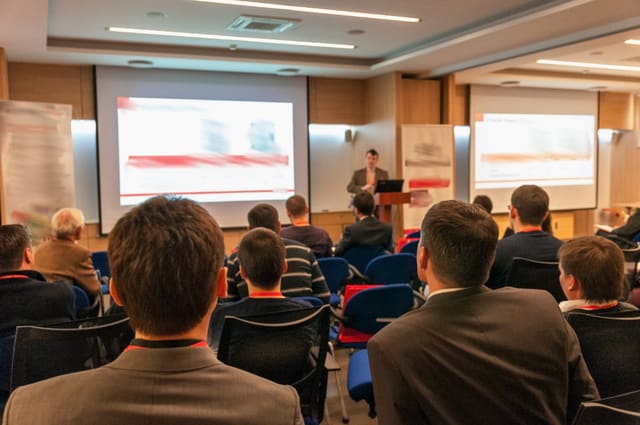5 Tips for Creating a Captivating Academic Presentation
Creating and presenting a captivating academic presentation of original research is a lot more complicated than a slideshow presentation for an undergraduate class. Here are five ways to avoid the major pitfalls of academic presentations and create impressive PowerPoints that let your research shine.
- Student Tips

During your undergraduate studies, you probably gave a presentation or two (or twenty), so you may think that you're the master of slide shows and a wiz with bullet points. But creating and presenting a smooth, informative, and captivating academic presentation of original research for conferences and job interviews is a lot harder than it seems. We've all suffered our way through a clumsy set of slides accompanied by a haphazard talk, and no one wants to be THAT presenter. Here's how to avoid some of the major pitfalls of academic presentations and create interesting and impressive PowerPoints that let your research shine.

1. Adapt to your audience
Once you reach the graduate level, it can often be difficult to remember how little you knew when you started in your field. And it can be equally difficult to know how much more you have to learn. Similarly, one of the biggest mistakes presenters can make is overestimating (or underestimating) their audience. In order to prepare a good, engaging presentation, do a bit of research on your audience. Is this a large conference, with participants from all areas of your field or an intimate symposium of your fellow researchers? Are you applying for a subject-specific job or one that involves a general knowledge of your field? Knowing to whom you will be presenting, and the context of that presentation, is important. Ask yourself: what does my audience know, and what can I teach them? What questions are they likely to pose, and how should I answer? Will they support my arguments or aim to disprove them? Once you've answered these questions, frame your presentation around informing your audience on their level.
2. Make a good opening

3. Keep it short

Most academic conferences specify the allowed length of any presentation, but even if you have unlimited time (unlikely) or a generous time-slot try to keep your presentation short. It's better to have lots of time for questions than to make your audience late for lunch. But how short is short enough? Again, try to gauge your audience. Experts in the field might have more tolerance for longer, detailed presentations than an audience with a general understanding of your field. A good rule, regardless of your audience's expertise, is to include only information that they absolutely need to understand your hypothesis, method, and findings and allow the audience to ask questions at the end.
4. Keep your PowerPoint simple

And keep your visual presentation to a minimum. If your audience's attention is focused on reading dense slides, processing detailed charts, or watching embedded videos, they won't be concentrating on what you have to say. Avoid big blocks of text and never, ever include information, words, or phrases that need explanations (like technical jargon or foreign words) unless you are certain that your audience will understand them. And, while it may be tempting to use fancy backgrounds, fonts, or special effects, don't. Your slides should be clean and clear. Remember that two words are not as good as one.
5. Practice

Even if your subject is as far removed from theater studies as one can get, your presentation is a performance. An actor or a musician would never get on stage without numerous practice sessions and neither should you. Make sure that you're comfortable with your material and your slides, and practice your presentation both alone and with an audience. If you'll use a laser pointer or props during the presentation, practice with them as well. And remember that you, and your research, are the stars of this performance. Don't include information or images that distract from your work. If you must include videos or pictures, do so because they enhance your research or provoke thought and questions, and practice transitioning between the presentation of these and your original work. And practice again after you've given the presentation. It's likely you'll give it again (or something similar) and you can use what worked and what when wrong during your presentation to improve for the next time.
Find your perfect program
Use our search to find and compare programs from universities all over the world!
PhDFind a program in these categories


